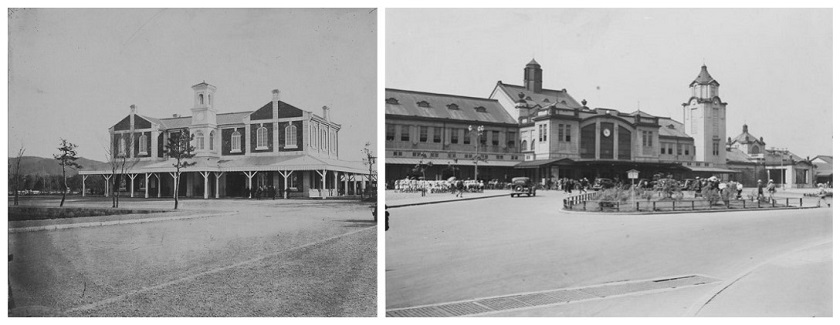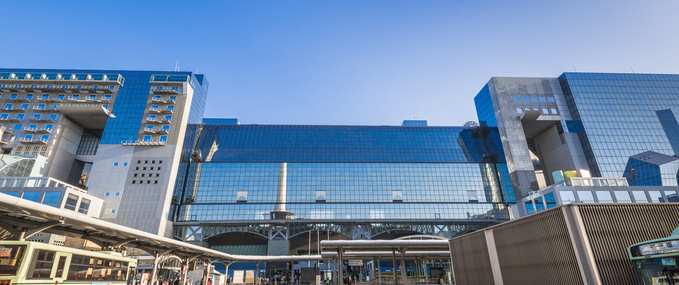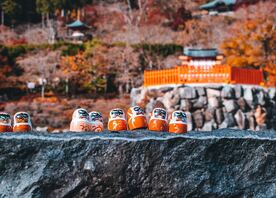From the outside Kyoto station looks like a spaceship that landed in the middle of the city, from the inside it is a sprawling city on its own.
In fact, Kyoto station is the 2nd largest building in Japan, only beaten by Nagoya station. In addition to being a massive transportation hub, it includes a shopping mall, 5-star hotel, cinema, government offices, various department stores, local shops and sky garden. It would be easy to spend hours exploring the station and enjoying the various facilities.
The station is well worth exploring, whether you are visiting Kyoto or just transiting through.
History
The massive building of Kyoto Station (京都駅) we know was only opened relatively recently, with different buildings serving before it. The first Kyoto station opened its doors on February 5th, 1877, and was opened by the Meiji emperor. Build as a red brick building, the station was heralded as a sign of modern progress and technology.
As time passed and demand for railway transportation took-up it became increasingly clear that a bigger station building was needed to accommodate the increase in passenger traffic. The second station was build in 1914 in a wide renaissance style structure, which was popular in European nations at the time. The building was mostly made of cypress wood, similar to the Kyoto Imperial Palace. Unfortunately the building was entirely destroyed in a fire in 1950.

First and Second station buildings
As there was little time for design a 3rd station building was build quickly. This time entirely out of concrete to be utilitarian with a lot of space. The downside, it was rather ugly. As the Tokaido Shinkansen opened and Kyoto modernized, it became more and more clear that a better and more beautiful building was needed. In the 1970s the first plans for en entire new structure were proposed, it took however another two decades before anything would be done.
Finally, in the 1990s, approaching Kyoto’s 1200 anniversary, a design competition was held for the new station building. The winning design, a massive building of glass, steel and just a little bit of concrete. It was to be a modern, 15-story building, something that had never been seen before in Kyoto. The design was by no means controversial as Kyoto is well known for its low rise skyline of traditional buildings. Regardless, construction went ahead and today the station building is loved by locals and visitors alike.

.png)



